By Rachel Kiley
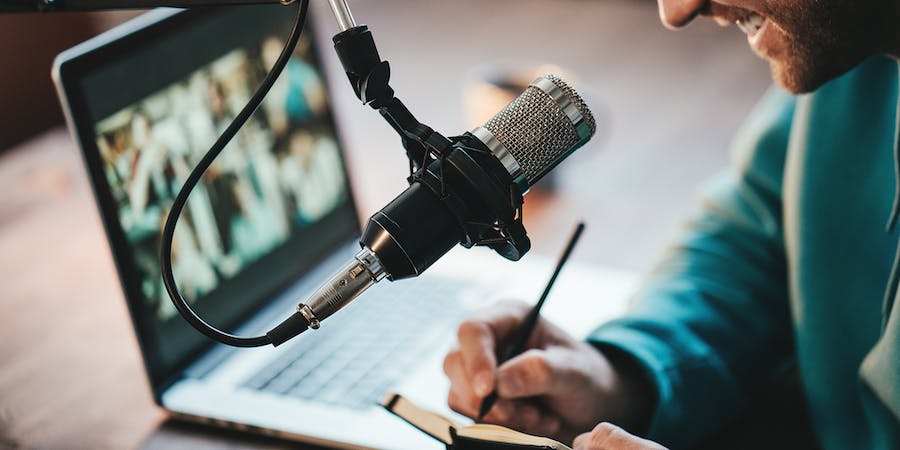
Passionfruit may receive a payment in connection with purchases of products or services featured in this article. Read our Ethics Policy to learn more.
Choosing the best USB microphone for podcasting and content creation can be a daunting task for those not already well-versed in the world of audio. Sound can easily make or break a project, and while having the right mic isn’t the only piece of the puzzle, it’s certainly an important place to start.
What to Look for in a Podcasting Microphone
If you’re looking for a podcaster USB mic that will help you create high-quality audio content, there are a few things you should keep in mind. First, you’ll want to make sure that the microphone has a good frequency response. This will ensure that your audio is clear and concise. You’ll also want to make sure that the microphone is able to handle a high volume level, especially if you plan to record music or other loud audio.
Condenser vs Dynamic Microphones
Choosing a USB microphone for podcasting is easier with a little extra knowledge. Understanding the differences between dynamic and condenser microphones can also help in choosing the right mic for your needs. Dynamic microphones are typically less expensive, more rugged, and require less power than condenser microphones. They work well for live vocals and instruments and can handle high sound pressure levels. Condenser microphones are often more delicate and require phantom power to operate. They tend to have a wider frequency response and higher sensitivity than dynamic microphones, making them a good choice for recording vocals and acoustic instruments—but on the flip side, they can pick up more ambient noise.
Even knowing what to look for in a USB podcast mic, there are still so many choices on the market for content creators today. We’ve gone over the reviews of a number of the most popular USB microphones and come up with recommendations that will hopefully make the process a little bit easier.
1) Blue Yeti X
Best All Around/Versatile Microphone
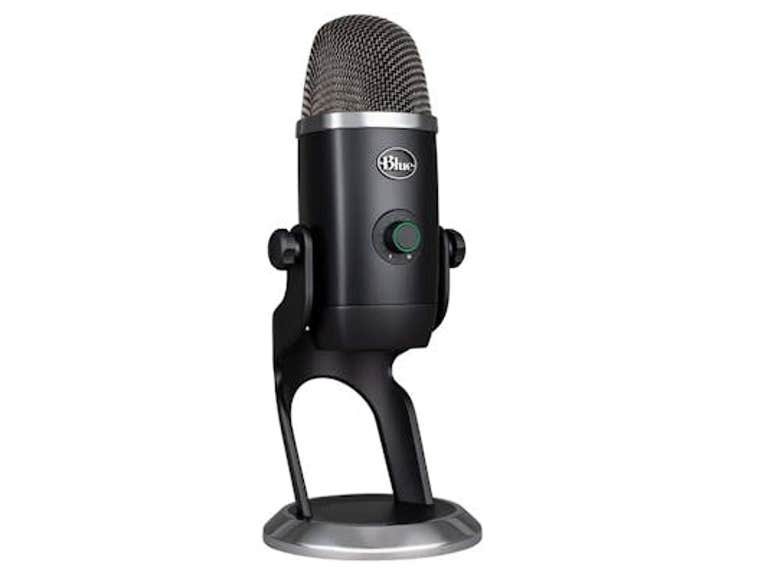
The Blue Yeti X is a professional-grade USB microphone with advanced controls for monitoring and adjusting audio levels. It features a four-capsule condenser array and a built-in pop filter for clear, articulate sound. The Yeti X also has an LED light ring that provides visual feedback for sound levels and mic mute status, making it easy to keep tabs on your recording as you go.
There’s a reason variations of the Blue Yeti microphone have persevered as the top USB mics for content creators over the years. While the X is known specifically for its ability to capture clean, clear audio for podcasting, streaming, and even voice acting, being a great multi-purpose mic means you can also use it to record music and vocals if you aren’t ready to invest in dedicated mics for that purpose. If you only want one USB mic in your inventory, the Blue Yeti X is it.
Price $169.99
2) Shure MV7
Best Podcasting Microphone
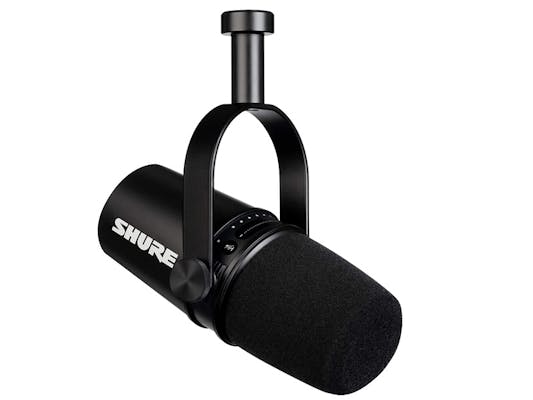
The Shure MV7 is another versatile mic that can be used in a variety of settings. It offers a unique combination of features that make it ideal for podcasting, including a built-in pop filter and an optional XLR output in addition to USB. The MV7 also has a headphone jack so you can monitor your recording in real-time, and its compact design makes it easy to transport.
While it runs pricier than other candidates for the best USB podcast mics, you get better sound quality as part of the deal. As a dynamic microphone, it also generally won’t pick up as much background noise as condenser microphones will, making it a good choice for people in noisy environments without as much ability to control ambient sound while recording. The XLR cable also offers the opportunity to upgrade down the line without buying a whole new microphone.
Price: $249.00
3) Rode VideoMic Pro+
Best Filmmaking Microphone
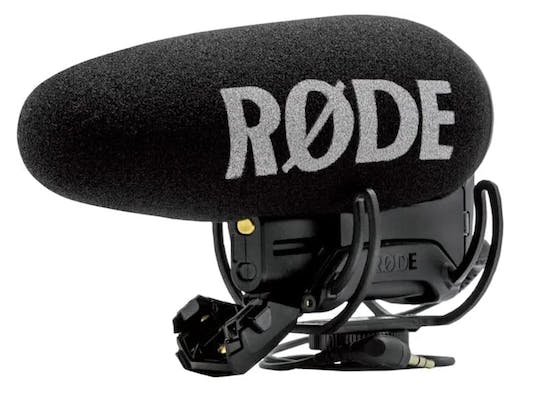
Desktop microphones are going to be the best USB microphone for podcasting, but what if your content revolves more around scripted videos, sketches, or other non-stationary scenarios? In that case, you’ll do better with a shotgun mic, such as the Rode VideoMic Pro+.
Rode is a well-known microphone brand, and the Pro+ is an upgrade to its slightly cheaper but still solid VideoMic Pro. This is generally for use alongside a DSLR camera rather than for standalone audio, but depending on your needs, it might be the best outside-of-the-box recording option. The rechargeable battery lasts for up to 100 hours and can also be powered via USB, saving you from being tethered to your computer while you record your videos.
Price: $232.00
4) Audio-Technica AT2020USB+
Best Music Microphone
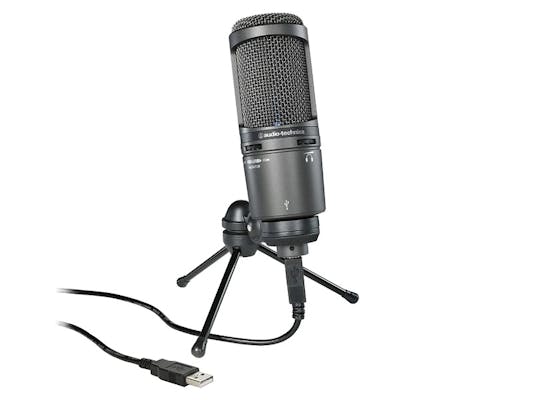
Sometimes, a podcaster’s USB mic needs to be prepared for a variety of projects and styles. In an ideal world, you’d have different microphones to record different instruments and vocals. Still, when you’re doing everything at home by yourself, that isn’t always practical—especially if you’re just starting out.
Audio-Technica’s AT2020USB+ microphone is a solid option when it comes to recording music across the board, as far as USB mics go. It has a wide frequency response and captures a lot of detail. This condenser mic is also very sensitive, so it picks up all the nuances in your performance. The USB interface is easy to use and makes it easy to record your music directly to your computer, while the included stand and a carrying case make it easy to store and travel.
Price: $129.00 (usually $149.00)
5) Samson Go Mic
Best On-The-Go, Budget Mic
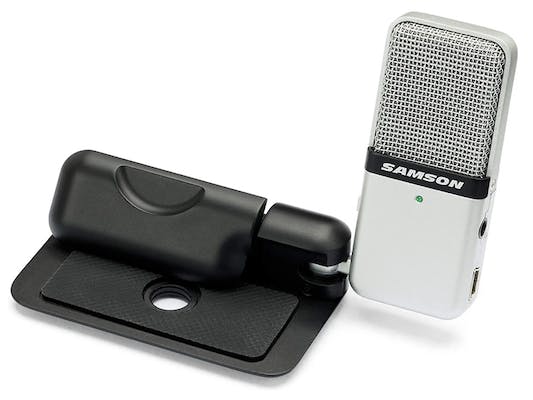
For many, the best USB mics are the most accessible and affordable options. If you’re looking for something far more basic and still suitable for on-the-go needs, look no further than the Samson Go Mic.
The Samson Go Mic is a small and lightweight handheld USB microphone that is perfect for on-the-go recording. It has two different pickup patterns—cardioid and omnidirectional—which allow you to capture sound from all around you or from a specific direction. It also comes with a clip that attaches it to your laptop or another surface to keep things steady while you record.
It may not have all the bells and whistles the pricier USB mics have, but like Blue mics, it has withstood the test of time for a reason. If ease of use and budget are important factors, this is a great starting point to up the audio quality of your videos today.
Price: $29.99 (usually $49.99)
USB vs XLR
When comparing USB and XLR microphones, there are several key factors to consider, each with its own set of advantages and disadvantages. Here’s a detailed breakdown:
USB Microphones:
Advantages:
- Ease of Use:
- Plug and Play: USB microphones can be directly connected to a computer or other USB-enabled devices without the need for additional equipment or interfaces.
- Convenience: Ideal for beginners or those who need a quick and easy setup.
- Portability:
- Compact: Often smaller and more portable, making them great for on-the-go recording, podcasts, or streaming.
- Cost-Effective:
- Affordable: Generally less expensive compared to XLR microphones and the necessary additional equipment.
Disadvantages:
- Quality:
- Limited Audio Quality: While some high-end USB microphones offer good quality, they typically do not match the professional audio quality of XLR microphones.
- Built-in Preamp: The quality is dependent on the built-in preamp, which may not be as good as external preamps used with XLR setups.
- Flexibility:
- Limited Customization: Fewer options for adjusting and enhancing audio quality.
- Compatibility: Generally not compatible with professional audio equipment without additional adapters.
XLR Microphones:
Advantages:
- Audio Quality:
- Superior Sound Quality: Generally, XLR microphones offer higher audio fidelity and are preferred for professional recording and broadcasting.
- External Preamps and Interfaces: Allows the use of high-quality external preamps and audio interfaces, enhancing overall sound quality.
- Flexibility and Customization:
- Modular Setup: Can be connected to a variety of professional audio equipment, offering greater control over sound.
- Versatility: Suitable for a wide range of applications, including music production, live sound, and studio recording.
- Durability:
- Professional Build: Often more robust and built to withstand the rigors of professional use.
Disadvantages:
- Complexity:
- Requires Additional Equipment: Needs an audio interface or mixer with phantom power, which adds to the complexity and cost.
- Setup Time: More time-consuming to set up and requires some technical knowledge.
- Cost:
- Higher Initial Investment: Generally more expensive due to the need for additional equipment such as audio interfaces, cables, and preamps.
Conclusion:
- USB Microphones: Best suited for beginners, podcasters, streamers, and those looking for a simple, cost-effective solution.
- XLR Microphones: Ideal for professionals, musicians, and audio engineers who need the highest audio quality and greater flexibility in their recording setup.
Choosing between a USB and XLR microphone depends on your specific needs, budget, and intended use. For casual or semi-professional use, a USB microphone might be sufficient, while for professional recording, an XLR microphone would be the better choice.




